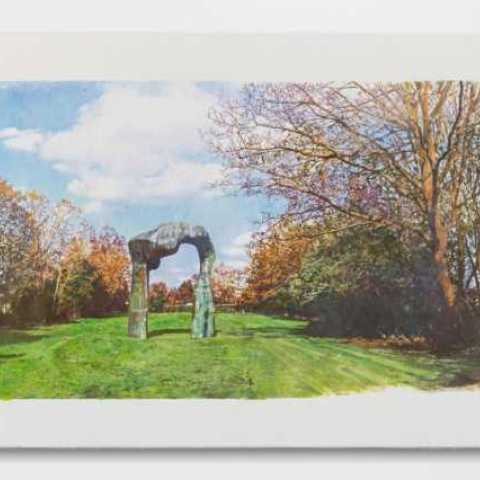Peer
99 Hoxton St
London
N1 6QL
United Kingdom

Over the last two decades Juan Araujo has pursued a highly personal investigation of the history of Western culture by making paintings based on images found in a range of online or printed contexts. This has included reproductions of other artists’ work in catalogues and monographs, books on architecture, high quality colour periodicals such as National Geographic as well as popular magazines and comics. For Araujo, this form of image gathering and appropriation allows him to derive free associative connections across a vast range of artistic and cultural production. This method of working provides Araujo with enormous pleasure through the act of creating artworks that can then suggest a multiplicity of potential connections and links between ideas and methodologies – playfully arching across theories, philosophies and styles in art.
For PEER, Araujo has created a new series of paintings and multimedia works that are based on photographs taken during his research visits to the Henry Moore Foundation in Perry Green, Hertfordshire and the Barbican Centre, London in early 2018. These two sources enabled the artist to pursue one of his long-term preoccupations – the consideration of how various articulations of modernist histories can be read through art and architecture, and the connections between them. In one of these new paintings, Araujo depicts Moore’s majestic bronze sculpture, The Arch (1968), standing in its meticulously landscaped pastoral setting. By contrast he has also depicted an urban view of the Barbican’s Lakeside Terrace complete with water features and planting, overlooked by the iconic modular residential units. Another painting of the Barbican is that of its carpark where the formed concrete is articulated for an altogether more abject and un-heroic vision of the modernist ideal. At their core, these very different iterations of British modernism seek to align society and culture with the tangible experiences and values of modern industrial life.
Other works in the exhibition appear much more abstract, but also have a photorealist quality. One is an image of the surface of a Moore bronze in close-up, with the scratches and patina greatly magnified. This obsessive rendering provides a great a source of pleasure for the artist, and it was during this concentrated making process when Araujo noticed that a sub-image seemed to emerge within the work that strangely echoed the more abstract qualities of a Turner seascape. This unexpected fusion of the work of these two very different artists is serendipitously echoed in a quotation by Moore about Turner’s skill as a painter, from which Araujo found the title for his exhibition.
-------------------------------------------------------------------
Araujo was born in Caracas Venezuela in 1971, where he lived and worked until moving to Lisbon, Portugal in 2015. He has exhibited internationally in group and solo exhibitions, the most recent include a survey show at Culturgest, Lisbon (2018), 'Southern Geometries, from Mexico to Patagonia', Fondation Cartier pour l'art contemporain, Paris, France (2018 -2019), a commission for ‘FRONT International: Cleveland Triennial', Ohio, USA (2018), and a presentation at the Coimbra Bienale, Portugal (2017). His work is in many private and public collections in Europe, the United States and Latin America. He is represented by Stephen Friedman Gallery, London and by Galleria Continua, San Gimignano, Italy; Cristina Guerra, Lisbon, Portugal and Galeria Luisa Strina, Sao Paulo, Brazil.
